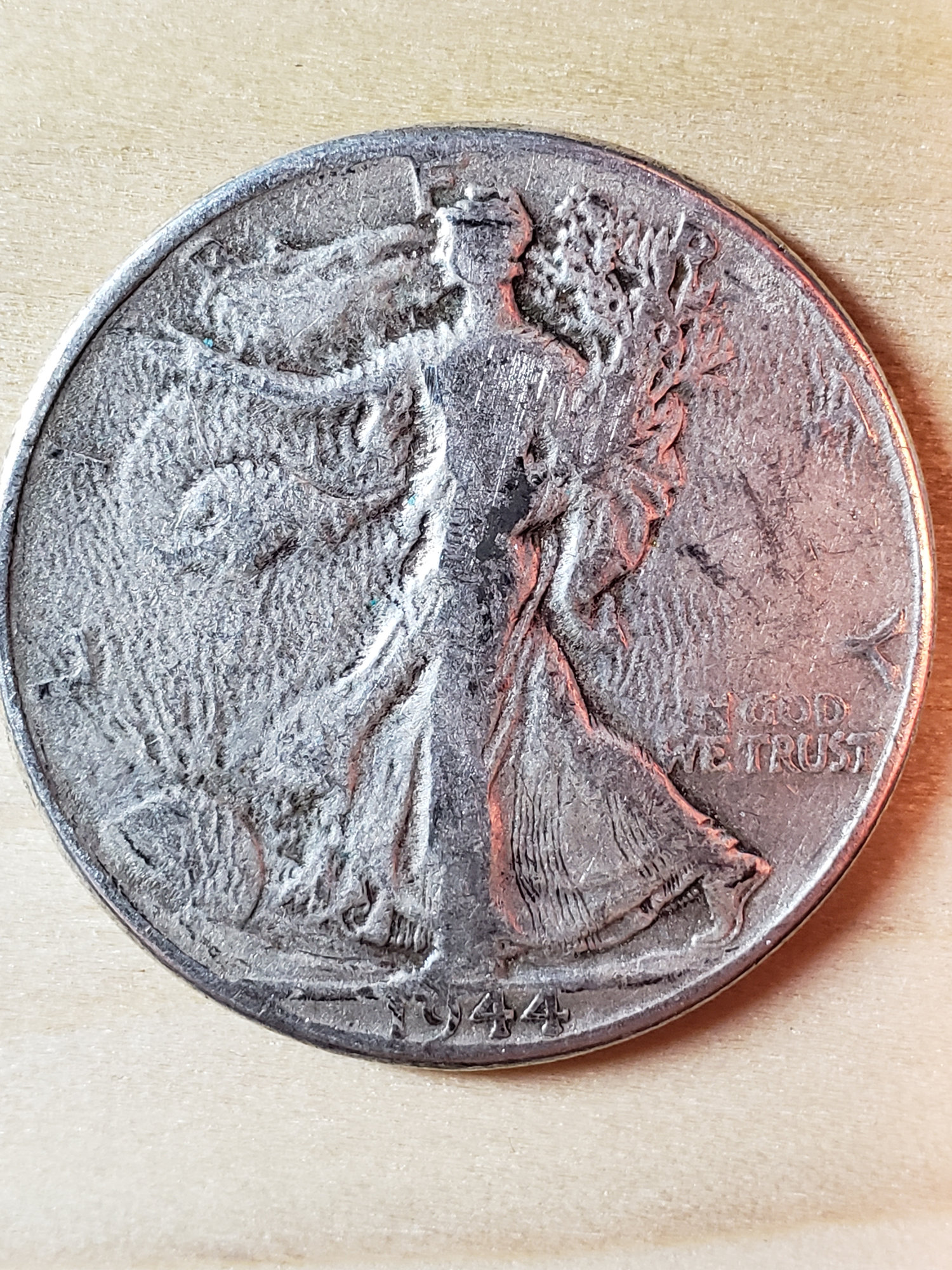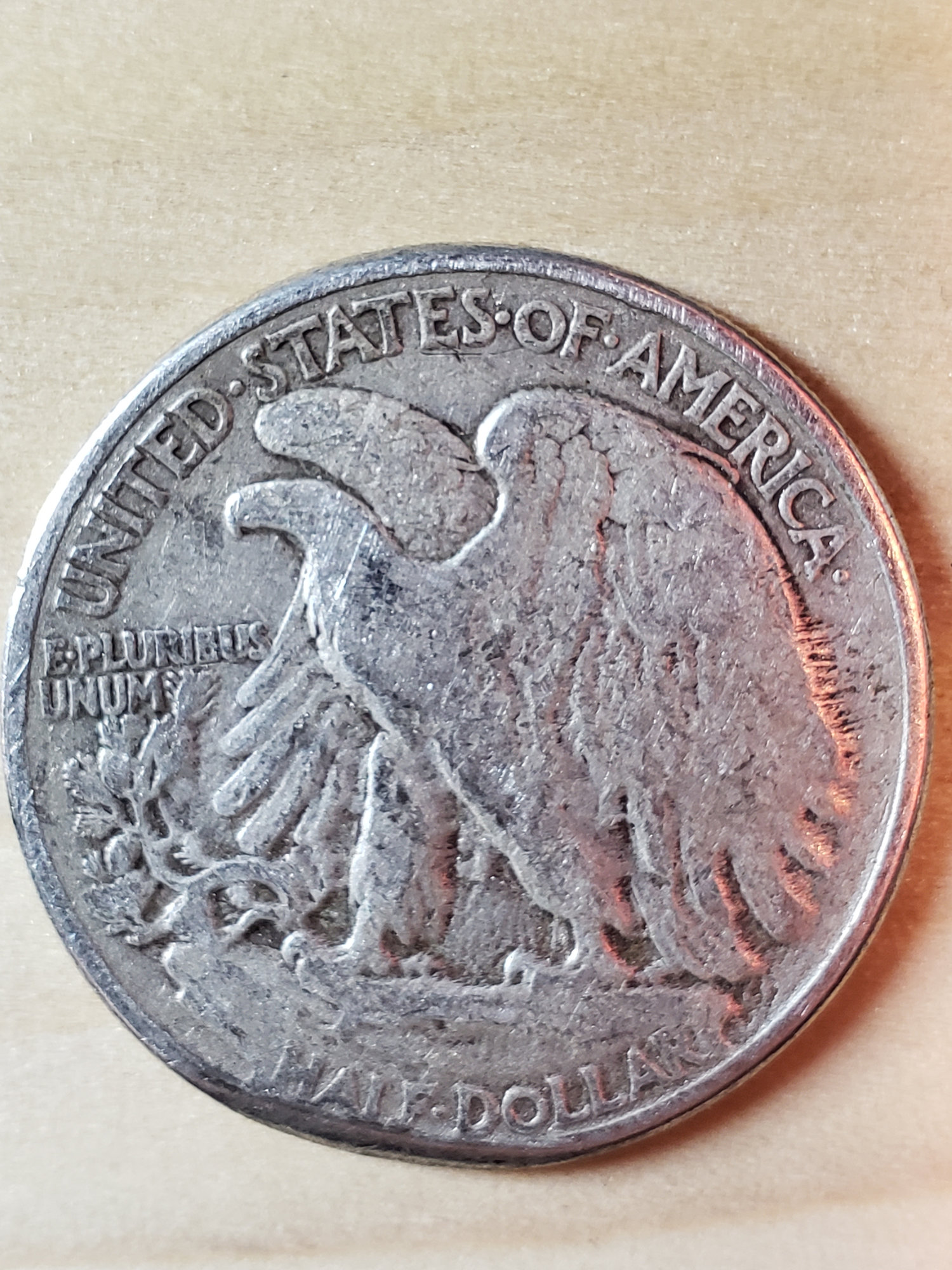1944 Walking Liberty wavy pattern
 CollectorBonEZ
Posts: 374 ✭✭✭✭
CollectorBonEZ
Posts: 374 ✭✭✭✭


Any idea what this might be from? The coin is in bad condition, but the wavy pattern in the background seems to be a natural part of the coin.
0
Comments
Sediment flow from a small but bustling creek
Ok that's a possibility, but what about the raised areas around the wing tips on the reverse that is not a wearing away of metal. It seems to be protruding from the original strike of the coin.
https://www.pcgs.com/setregistry/mysetregistry/showcase/6602
Metal flow from strike... Sorry man but this is just a run of the mill well circulated 44 Walker. Appears the coin has lived life to the fullest. Throw it in a book or in the silver stack and keep on looking...
NBL
J
Environmental damage if it's real...
I question its authenticity.
The lower stem of that 9 is pretty long, it should not stick out past the upper loop of the 9.
Agree---it may be worth more as a (probably) lead contemporary counterfeit.
Looks like a lead counterfeit. Did you weight it?
All comments reflect the opinion of the author, even when irrefutably accurate.
@CollectorBonEZ
Going to the basics and the easiest to do: weigh it as @jmlanzaf mentioned, use a magnet, and measure the diameter.
From Coin Facts:

EDGE: Reeded
DIAMETER: 30.00 millimeters
WEIGHT: 12.50 grams
MINTAGE: 28,206,000
MINT: Philadelphia
METAL: 90% Silver, 10% Copper
The edge visible in the 2nd photo looks bad. Likely cast forgery.
That is a fake WLH.... Indications listed above.... Cheers, RickO
Cull or counterfeit? The diameter is 29.6 mm.
https://www.pcgs.com/setregistry/mysetregistry/showcase/6602
The numbers are off, what about attraction to a magnet? Neodymium’s are best.
It is non magnetic. No reaction what so ever from the magnets.
https://www.pcgs.com/setregistry/mysetregistry/showcase/6602
Weight off, diameter off, surface of coins is “weird” as if it was done to hide something.
Try an edge pic as @jbk mentioned.
Don’t know how much time you want to spend on this but take it to a shop with “machine” and see what it says for silver content.
So many things to say this is not real, but up to you to check further, the only thing left would be sending to a TPGS for authentication.
I was just curious as to what would cause the wavy patterns if it is real. Either way it is just another coin in the strange coin pile.
https://www.pcgs.com/setregistry/mysetregistry/showcase/6602
If you have an LCS with a testing machine (someone else remind me of the name) they can tell you the composition.
Edit to add: please post the results here if you do
The wavy pattern can be caused by a rotating wire wheel like on a bench grinder or a Dremel tool.
I’m not a coin guy, but I have experienced corrosion in other fields, and the wavy part looks like corrosion from being partially immersed, off and on. The weight and diameter loss could also be explained that way. The webby strands at the edge of the wing could be re-deposition, depending on the chemistry and electrical charge and polarity of the wet environment. This is not field expertise that I have, but anecdotal experience. Take it for what it’s worth.
This is similar (not exact) to the whizzed surface coins
that were on the market in the mid-late '70's
See the flattened date and rim -
And, I agree it certainly looks like a lead counterfeit.
Drag the edge across a piece of paper - does it leave a gray trail behind?
I do not have a Walker at hand for comparison. Are the lines in the stripes in the lower right obverse correct?